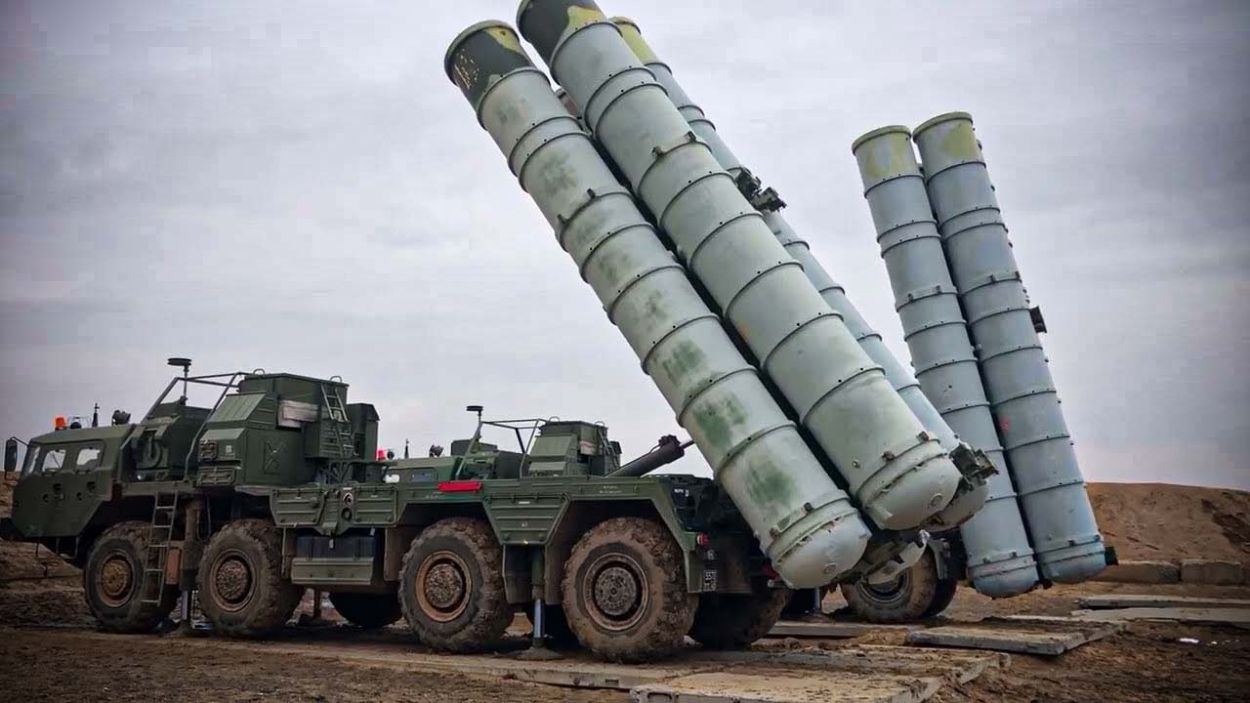In geopolitics, an enemy’s enemy becomes an automatic friend, even if that friendship is purely transactional. Big powers often avoid a direct confrontation and engage in shadow boxing by arming the adversary.
There are countless examples of this ‘arming the adversary’ strategy in international geopolitics. Think of India arming Armenia in Turkey’s neighborhood and Ankara arming Bangladesh and Pakistan in India’s backyard.
Or, for instance, China arming Pakistan and India arming the Philippines and Vietnam to counter China’s rising influence in the South China Sea.
Ever since Russia launched its full-scale invasion of Ukraine in February 2022, the West has been arming Kyiv and gradually raising the costs for Moscow by supplying more and more potent and long-range weapons to the country.
During these last three years, Russian red lines have been violated repeatedly, whether it is supplying F-16 fighter jets or providing Kyiv with long-range missiles to strike deep inside Russia, such as Storm Shadows.
Every time a Russian red line was crossed, all Moscow could do was issue new verbal threats to the West.

Since last month, the US has also been playing with the idea of providing Ukraine with nuclear-capable Tomahawk cruise missiles, which can strike deep inside Russian territory. The Tomahawk is an intermediate-range (2,500 km or 1,550 miles), subsonic cruise missile.
Once again, Russia responded with verbal threats.
Former Russian president and the Deputy Chairman of the Security Council of the Russian Federation Dmitry Medvedev issued a stark warning, saying US plans to supply Tomahawk cruise missiles to Ukraine could “end badly for everyone, especially Trump.”
However, it seems that Moscow has finally found a real pain point for the US that can be used to pressure Washington to change its Ukraine policy.
After Iran And North Korea, Russia To Challenge US Influence In the Americas
Russia has already been arming Iran and North Korea, two countries that are heavily sanctioned by the US.
However, both North Korea and Iran are thousands of miles away from the US. While they can hurt the US’s regional interests in West Asia and the Asia Pacific, they cannot challenge US supremacy in the Western Hemisphere, i.e., in North and South America.
Thus, in a sense, Russia did not challenge the Monroe Doctrine, which is over 170 years old.
The Monroe Doctrine, a U.S. foreign policy from 1823, stated that European powers could not colonize or interfere in the affairs of the Western Hemisphere, while the U.S. pledged not to interfere in European matters.
Its key points were a separate spheres of influence for Europe and the Americas, and a warning that any European intervention would be seen as a hostile act against the U.S.
In fact, the last time a European power challenged the Monroe Doctrine was in 1962 when the Soviet Union promised to supply ballistic missiles to Cuba. However, even then, a compromise was reached, and the Kremlin abandoned its plans to deploy its ballistic missiles in the US backyard.
Now, six decades after the Cuban Missile Crisis, which pushed the world to the brink of a nuclear armageddon, Moscow is once again challenging the Monroe Doctrine by arming Venezuela in Latin America, and early signs show that the policy might already be achieving its objective.
Russia Arming Venezuela To The Teeth
Earlier this week, Alexei Zhuravlev, First Deputy Chairman of the State Duma Defense Committee, told a Russian media outlet, Gazeta.Ru, that Russia is already supplying weapons to Venezuela.
Furthermore, he did not rule out supplying Caracas with Oreshnik missiles, Russia’s nuclear-capable hypersonic missile, against which Moscow claims that no Western air defenses are adequate.
In August, Russian President Vladimir Putin claimed that production had started on the Oreshniks and reaffirmed his plans to deploy them to ally Belarus.

The missile has a reported range of nearly 3,400 miles and could reach many parts of the continental US if launched from Venezuela.
“Russia is actually one of Venezuela’s key military-technical partners. We supply the country with virtually the entire range of weapons, from small arms to aircraft. Russian Su-30MK2 fighters are the backbone of the Venezuelan Air Force, making it one of the most powerful air powers in the region.”
“The delivery of several S-300VM (Antey-2500) battalions has significantly strengthened the country’s ability to protect critical facilities from air attack. According to the latest information, Russian Pantsir-S1 and Buk-M2E systems were just recently delivered to Caracas by Il-76 transport aircraft,” he said.
The lawmaker further said that the information about which weapons Russia is supplying to Venezuela is classified, and the “Americans are in for some surprises”.
“Information about the volumes and exact names of what’s being imported from Russia is classified, so the Americans could be in for some surprises. I don’t see any obstacles to supplying a friendly country with new developments like the Oreshnik or, say, the proven Kalibr missiles. At least, no international obligations restrict Russia from doing so,” he said.
The Kalibr reportedly has a range of 930 to 1,550 miles, which could reach the southern continental U.S.
Notably, an Ilyushin Il-76 airlifter, owned by the Russian Aviacon Zitotrans air transport company, arrived in the Venezuelan capital of Caracas on October 26. It’s not clear what cargo was transported in the aircraft; however, it is widely believed that Moscow transferred weapons to the country.
Also, the delivery of the Pantsir-S1 air defense system appears to be a new development.
The Pantsir-S1 missile system has an engagement range of up to 20 km and an altitude of up to 15 km for its missiles. Its 30mm automatic cannons have a range of up to 4 km and can engage targets at altitudes of 0 to 3 km. It can track multiple targets simultaneously and respond rapidly.
The Pantsir-S1 missile system provides short-range air defense for high-value targets. Notably, Russian President Vladimir Putin and North Korean President Kim Jong Un are both protected by the Pantsir AD system.
Venezuela received the Buk and S-300VM AD systems from Russia years ago. The S-300VM is a modernized version of the Cold War-era S-300V1, which provides long-range air defense capabilities to Venezuela. The S-300VM AD missile system is carried on tracked transport-erector-launcher (TEL) vehicles, and its mobility could be a real headache for the US.

Venezuela also has Russian Su-30MK2 (locally designated Su-30MKV) fighter jets that can serve in air defense roles and also launch supersonic anti-ship missiles.
Earlier this month, the Venezuelan Air Force released footage showing Su-30MK2 fighters on patrol over the Caribbean equipped with Kh-31 anti-ship missiles.
The Kh-31 is considered the Venezuelan Armed Forces’ most formidable anti-ship asset, while the Su-30 is the longest ranged fighter in the Americas, allowing it to launch strikes against targets across the Caribbean and beyond. The ramjet-powered missile follows a sea-skimming trajectory at speeds exceeding Mach 3, which makes its interception highly difficult.
Furthermore, since the missile is lightweight, a single Su-30MKV could launch a salvo of 10-12 missiles. The missile’s ‘fire and forget’ capabilities mean such strikes can be launched as part of ‘hit and run’ attacks.
While there are doubts about Russia’s ability to provide its allies with significant supplies of AD systems and long-range missiles, given Moscow’s involvement in the Ukraine war, the threat of supplying offensive weapons to Venezuela could serve the objective of deterring Washington from supplying long-range missiles to Kyiv, such as Tomahawk cruise missiles.
Notably, in June last year, Putin warned that Moscow could arm countries with a view to attacking Western targets.
Putin made the statement while criticising the West’s delivery of long-range weapons to Ukraine.
“If someone thinks it is possible to supply such weapons to a war zone to attack our territory and create problems for us, why don’t we have the right to supply weapons of the same class to regions of the world where there will be strikes on sensitive facilities of those countries?” the Russian president said.
“That is, the response can be asymmetric. We will think about it.”
In recent months, Trump has threatened Moscow that Washington could supply Tomahawk cruise missiles to Kyiv to strike targets deep inside Russia.
However, earlier this month, the US ruled out supplying the missiles to Ukraine for the time being. It seems that the Russian threats to provide Venezuela with missiles like Oreshnik and Kalibr might be having some role in the US decision to postpone the supply of Tomahawks to Ukraine.
- Sumit Ahlawat has over a decade of experience in news media. He has worked with Press Trust of India, Times Now, Zee News, Economic Times, and Microsoft News. He holds a Master’s Degree in International Media and Modern History from the University of Sheffield, UK.
- VIEWS PERSONAL OF THE AUTHOR.
- He can be reached at ahlawat.sumit85 (at) gmail.com




